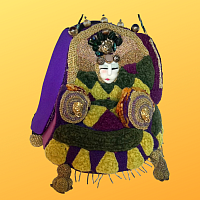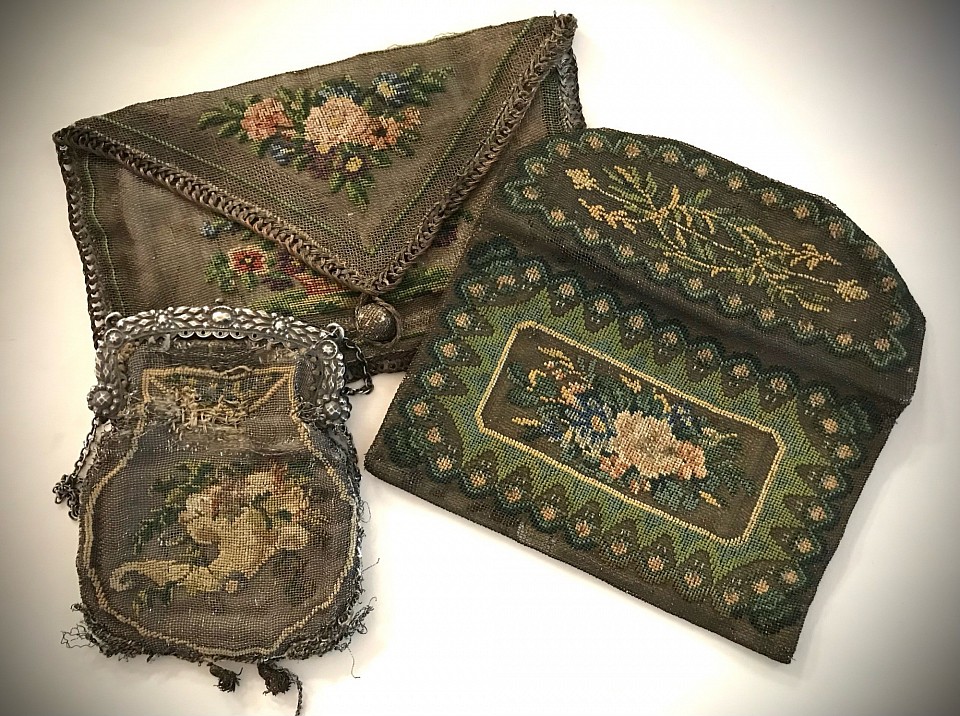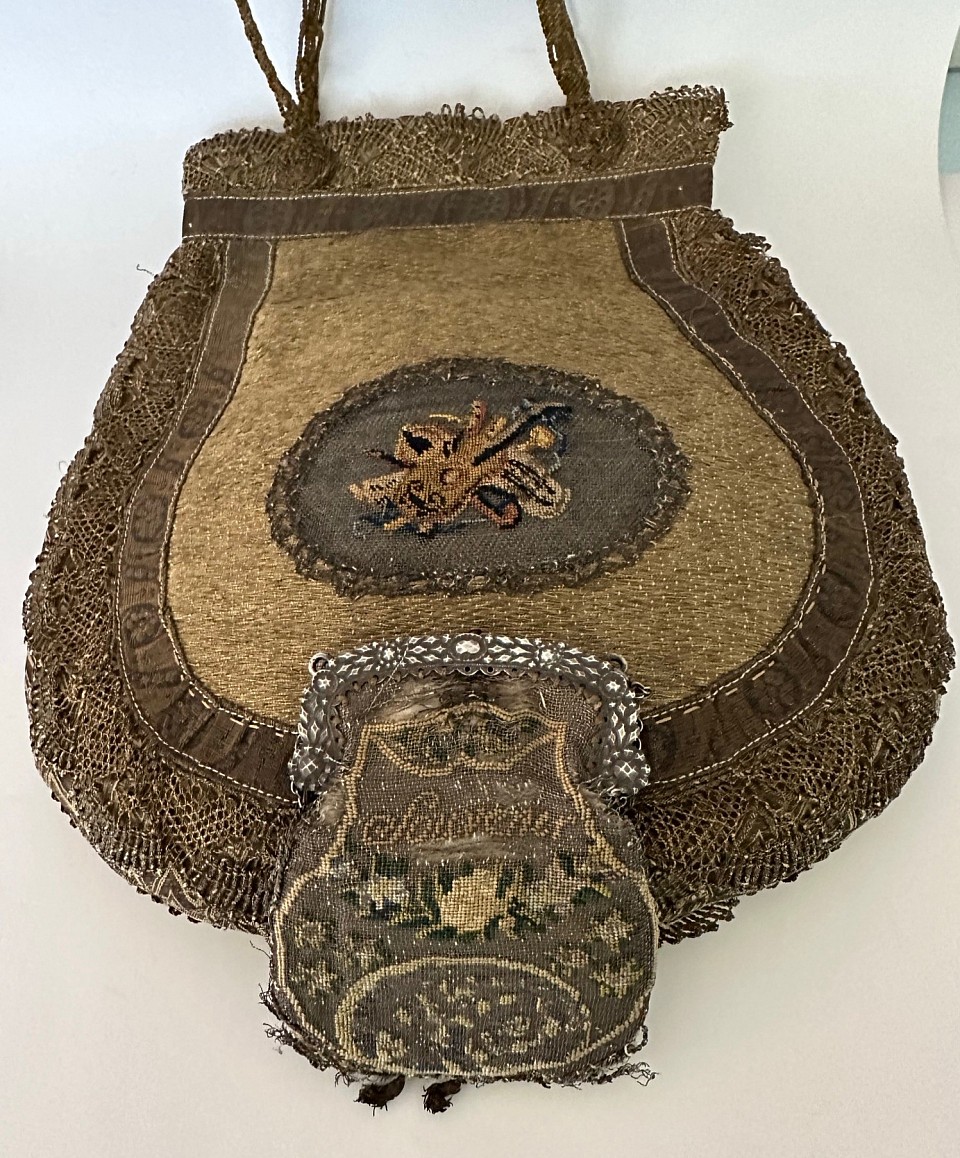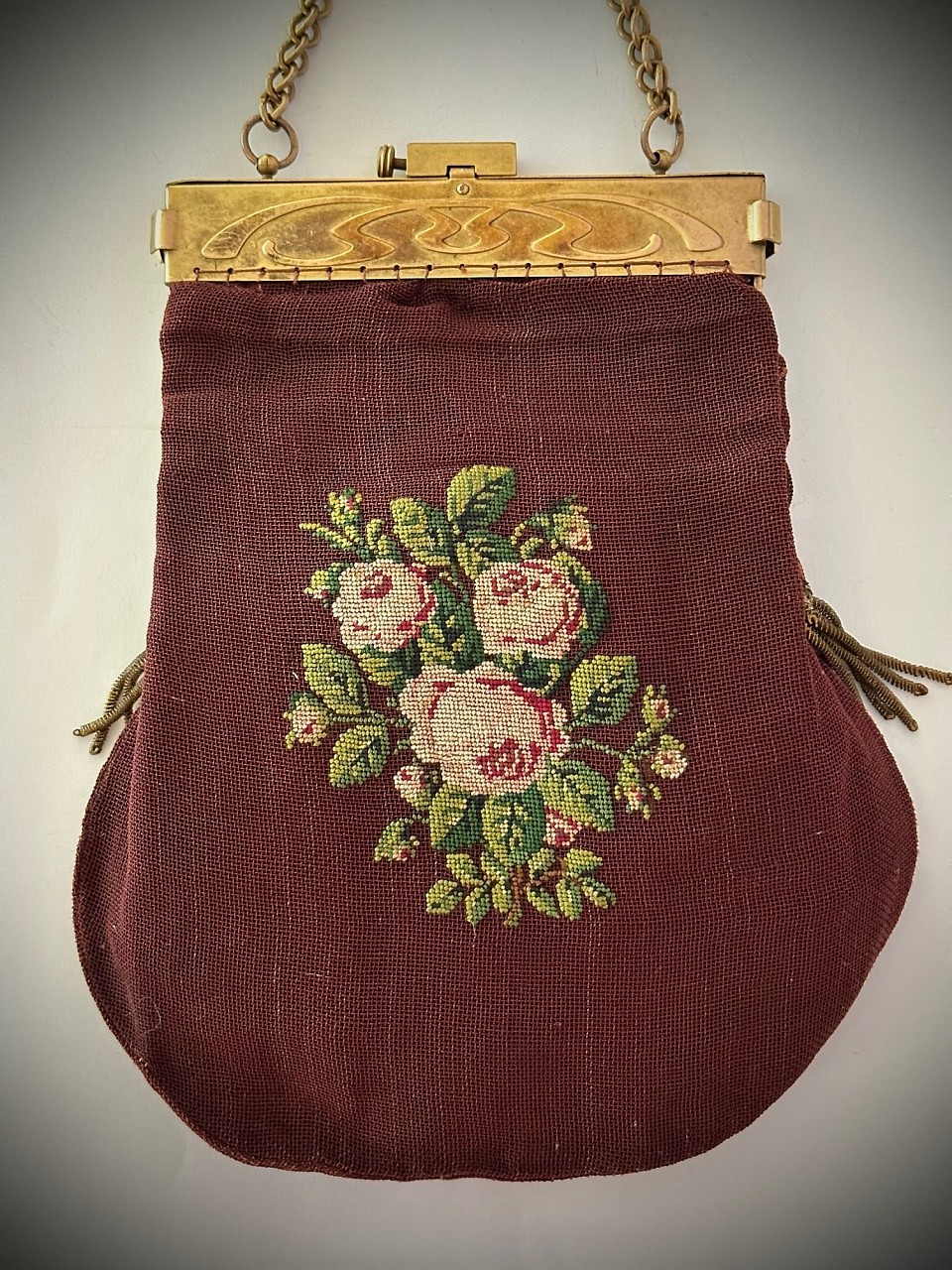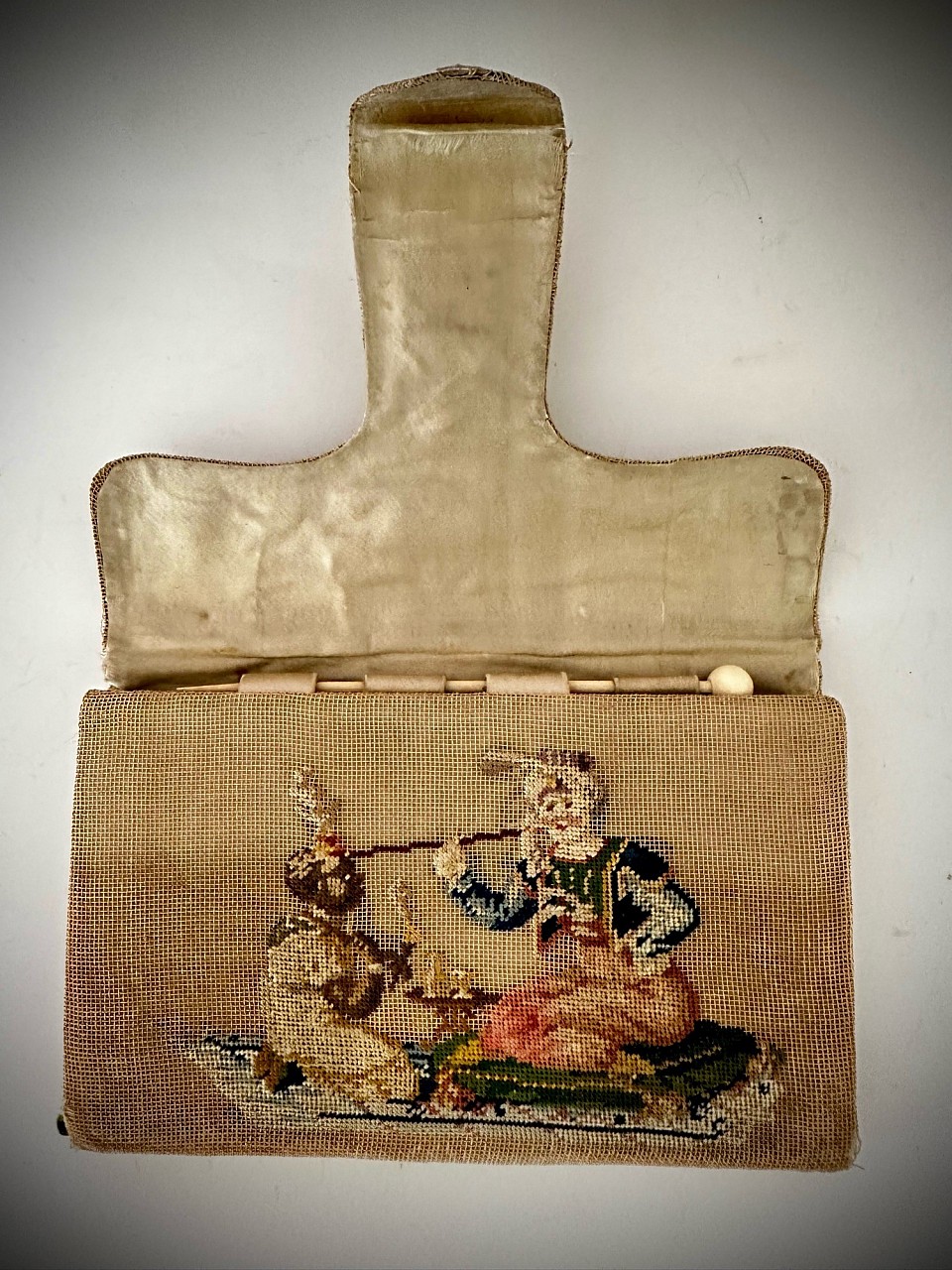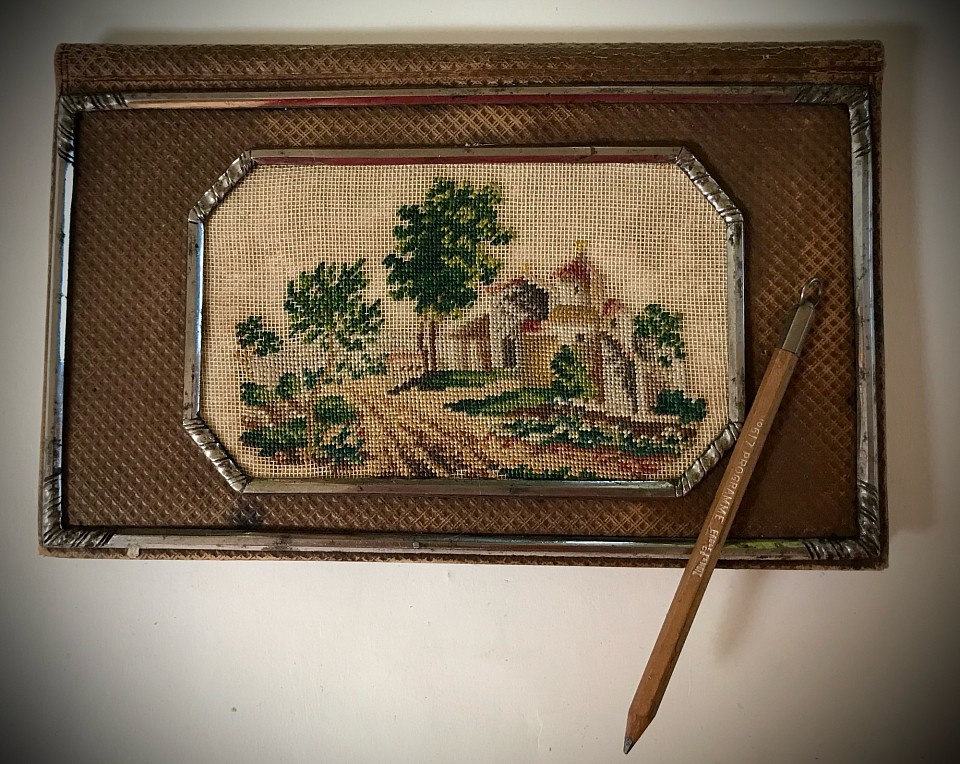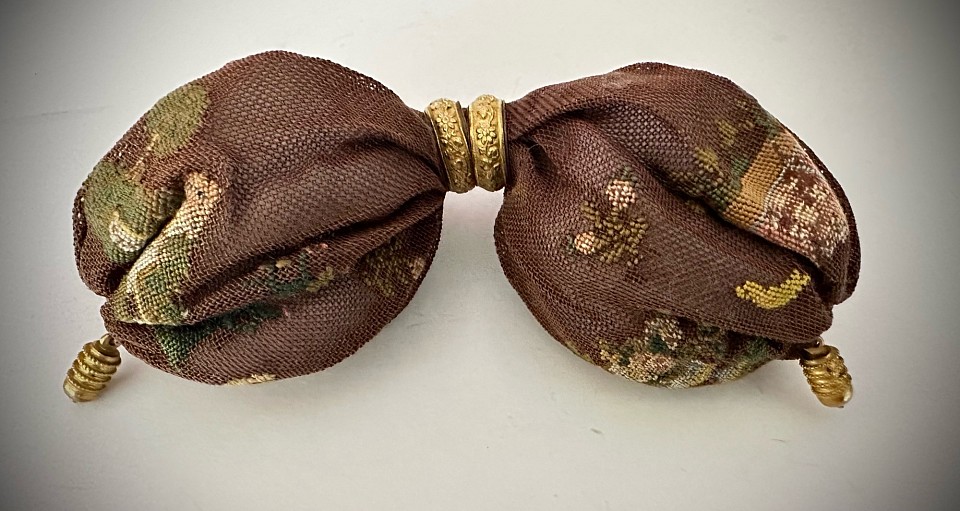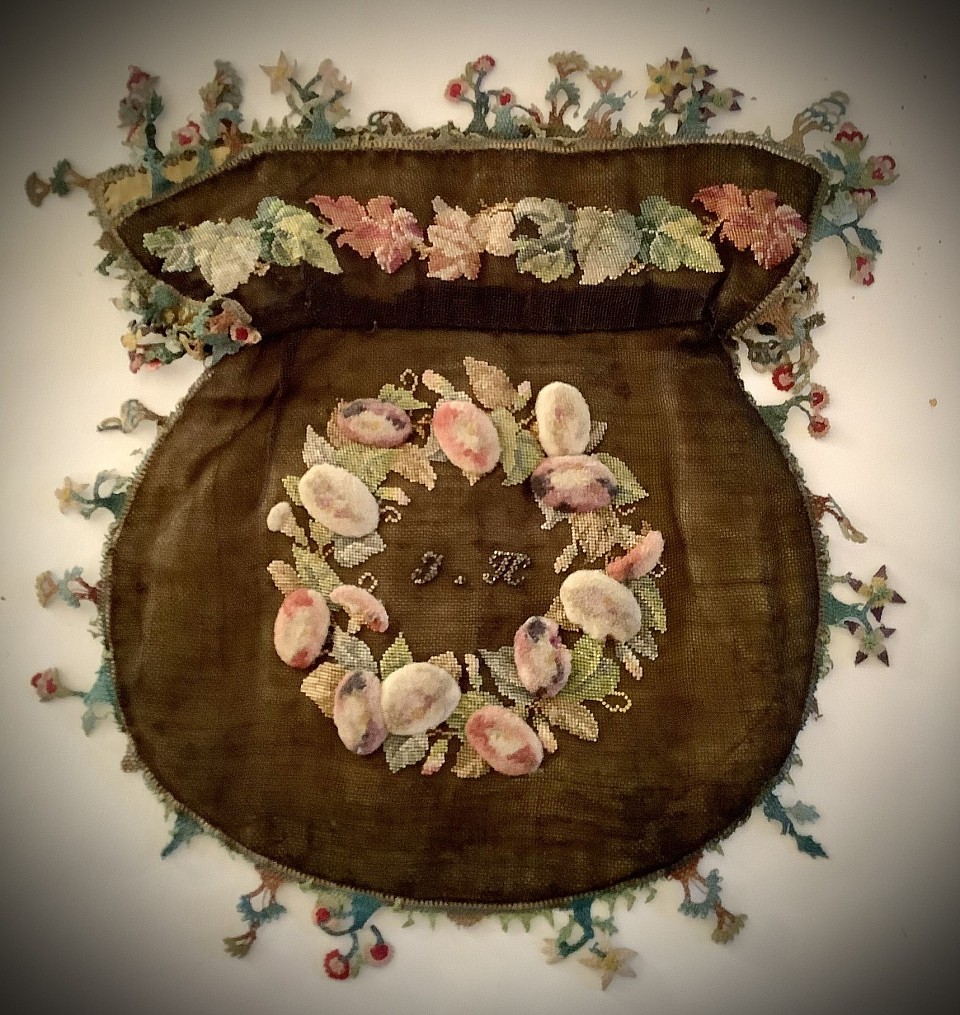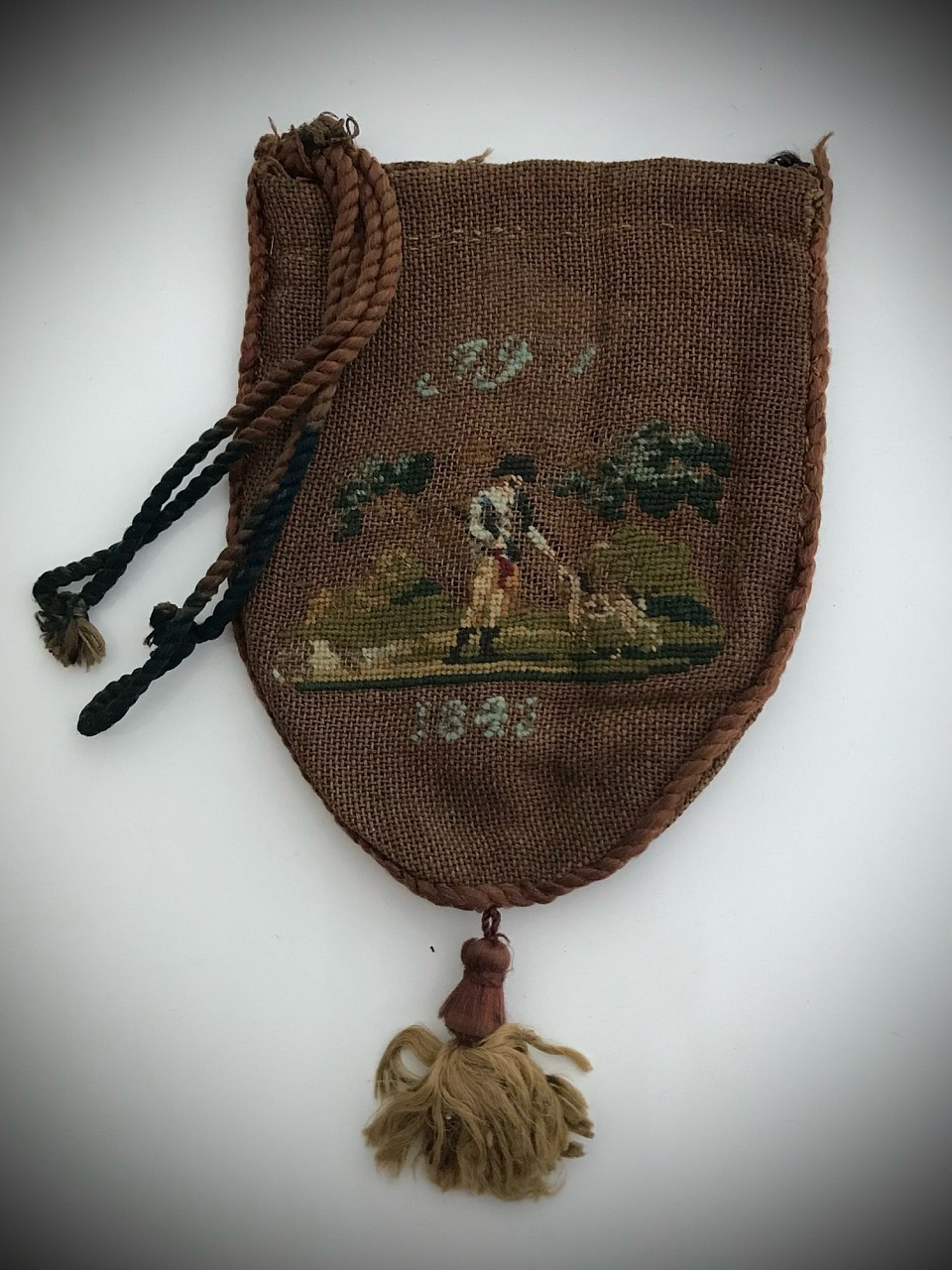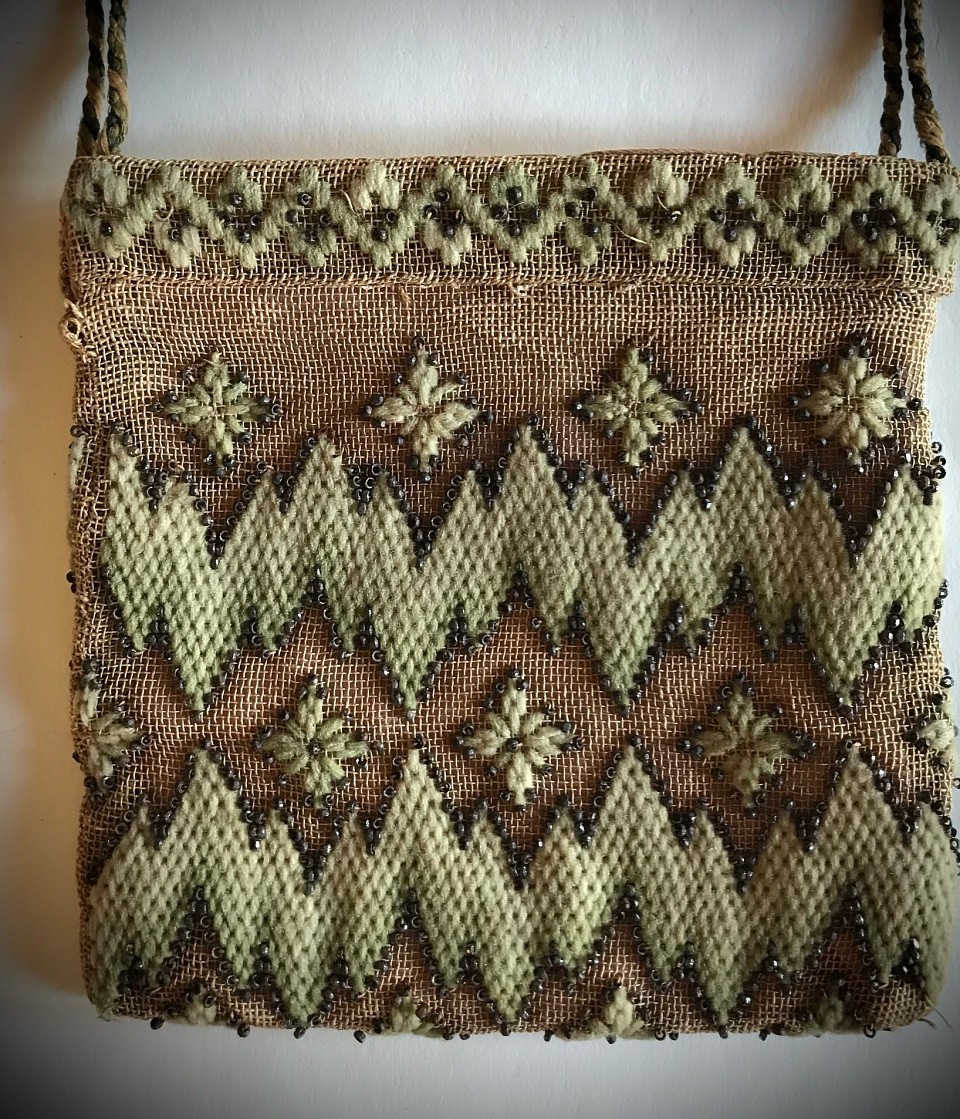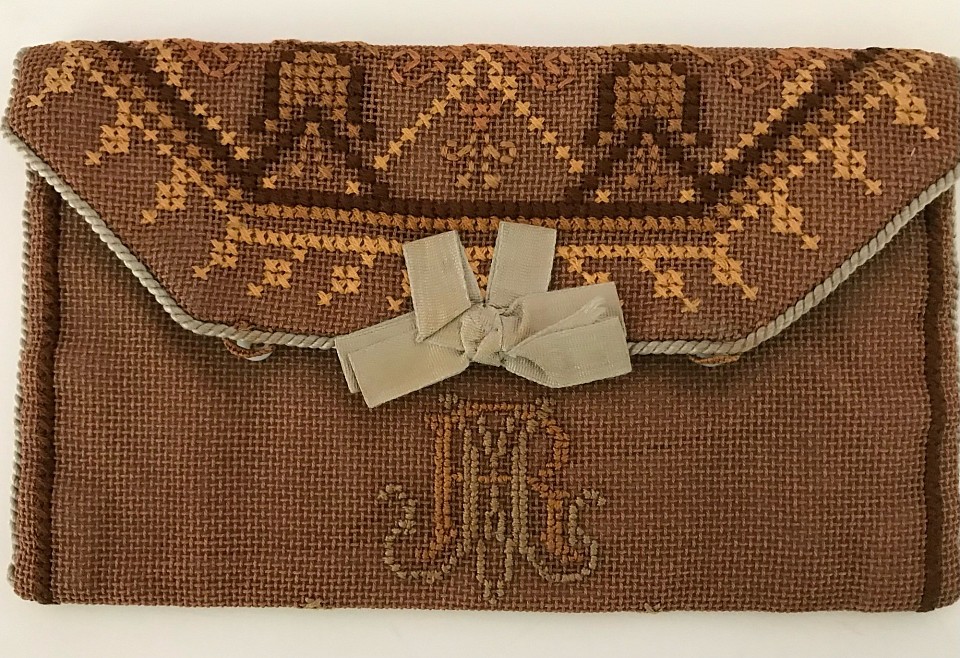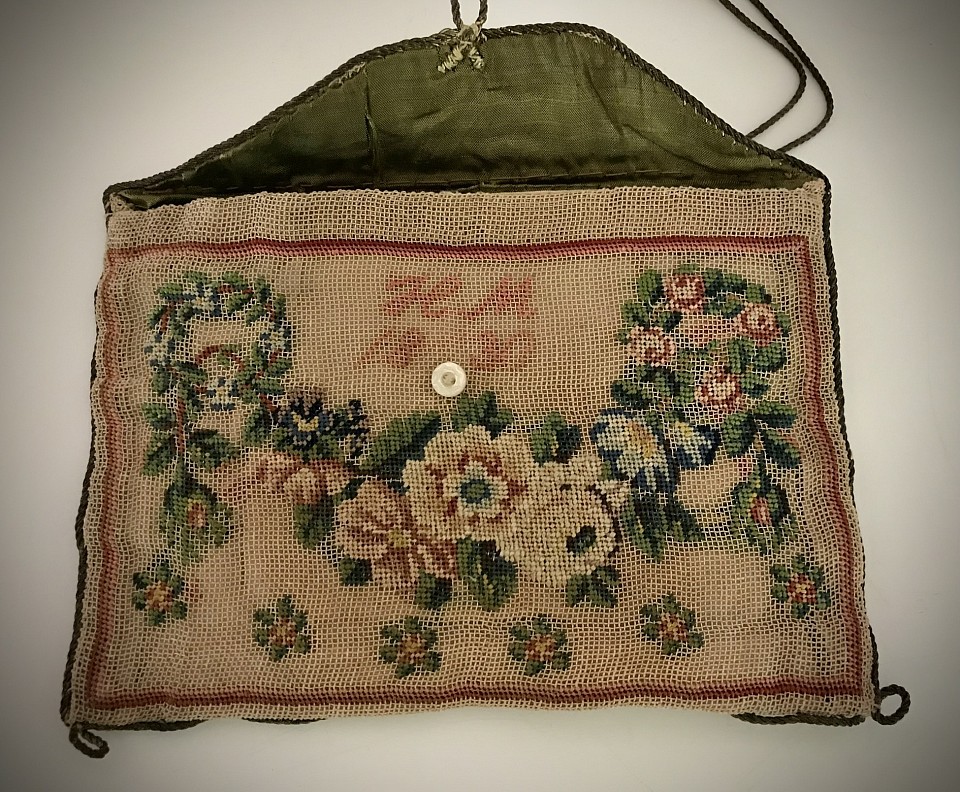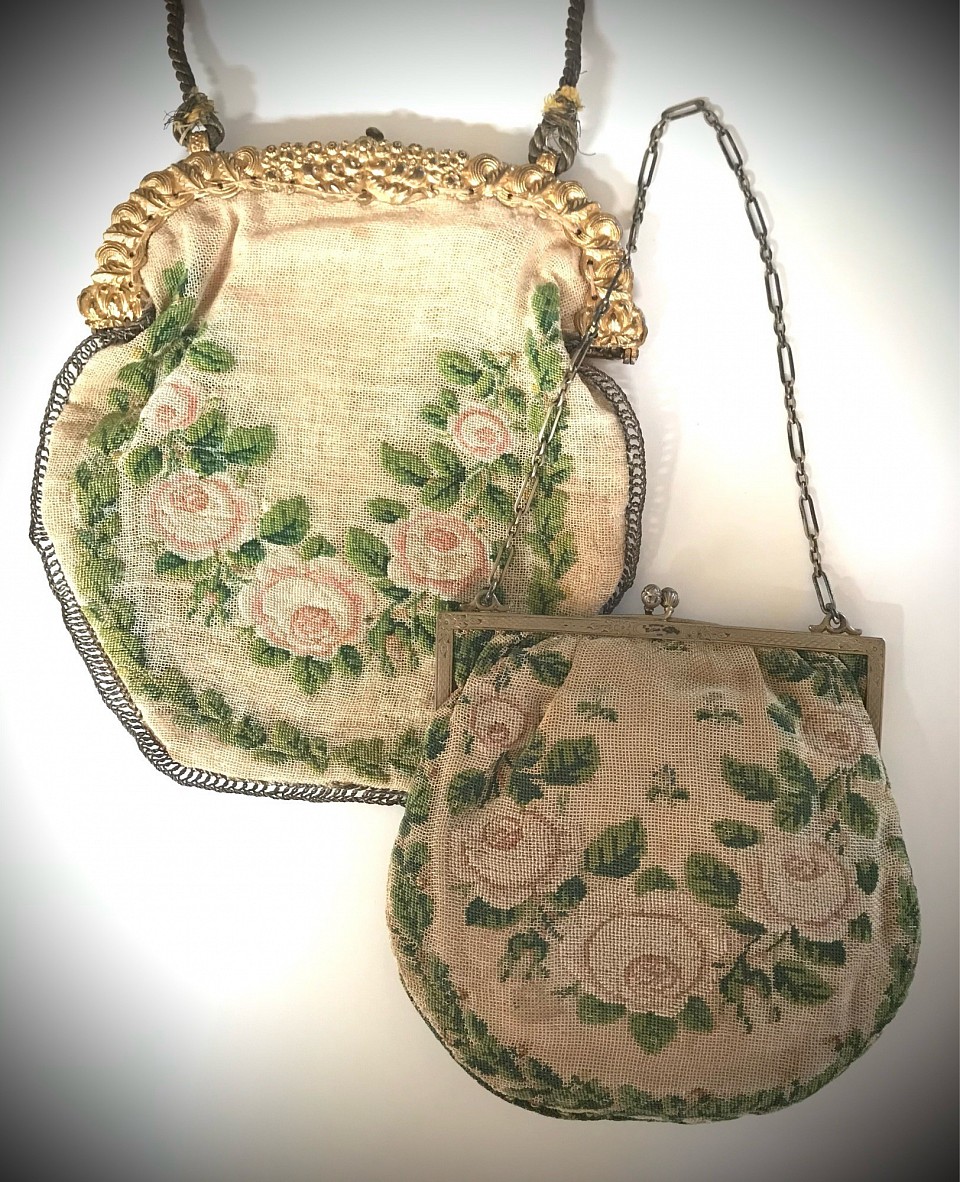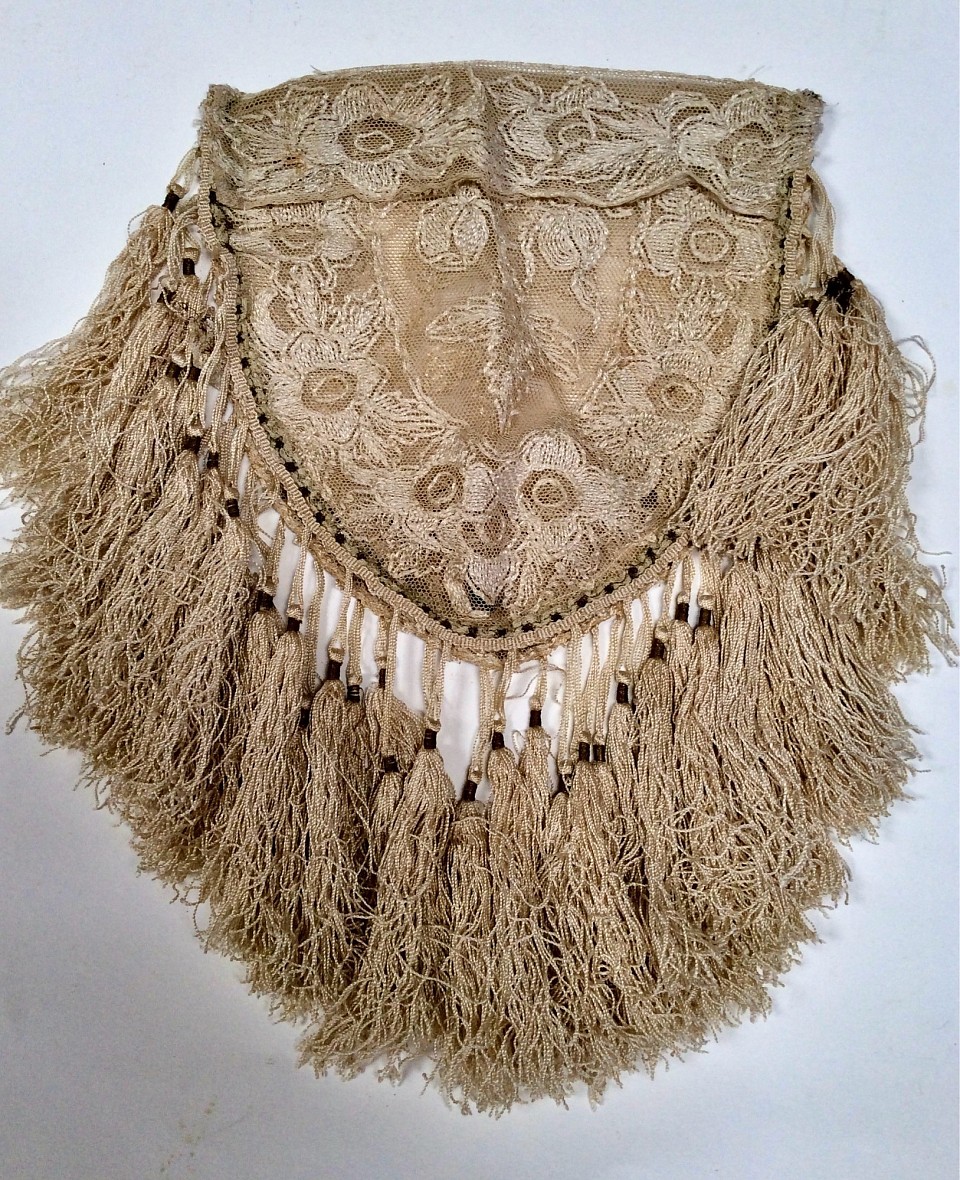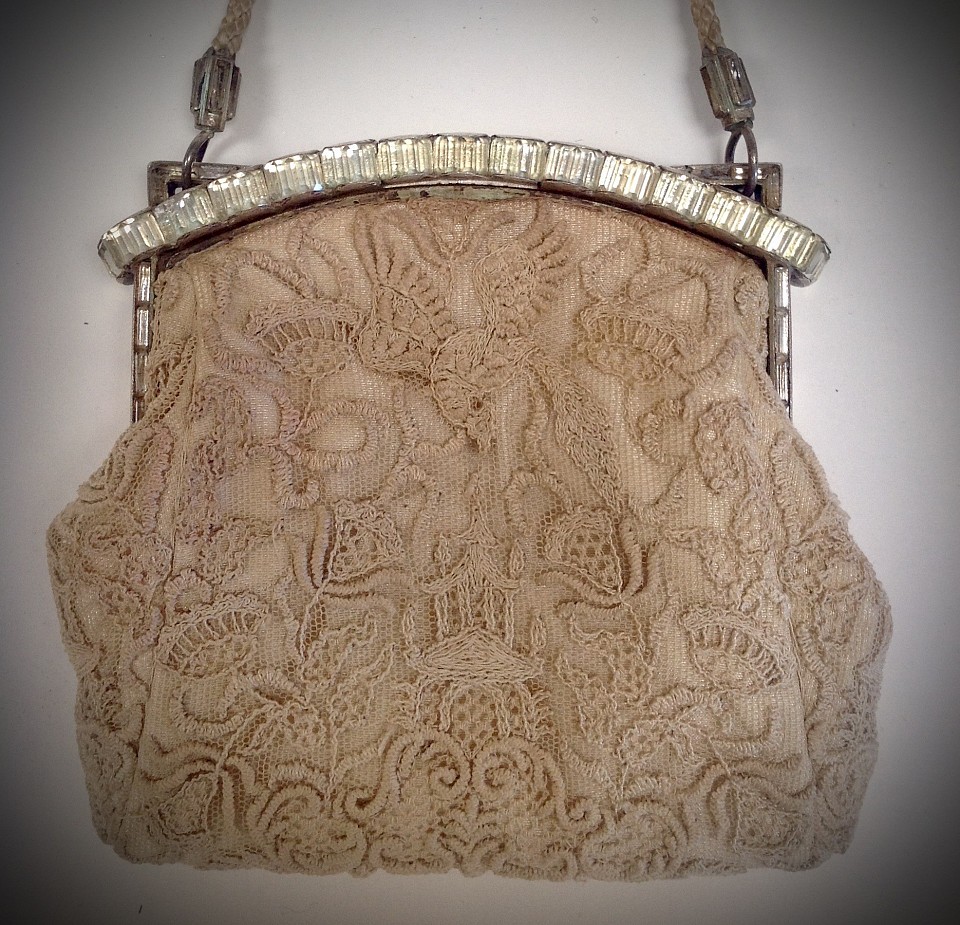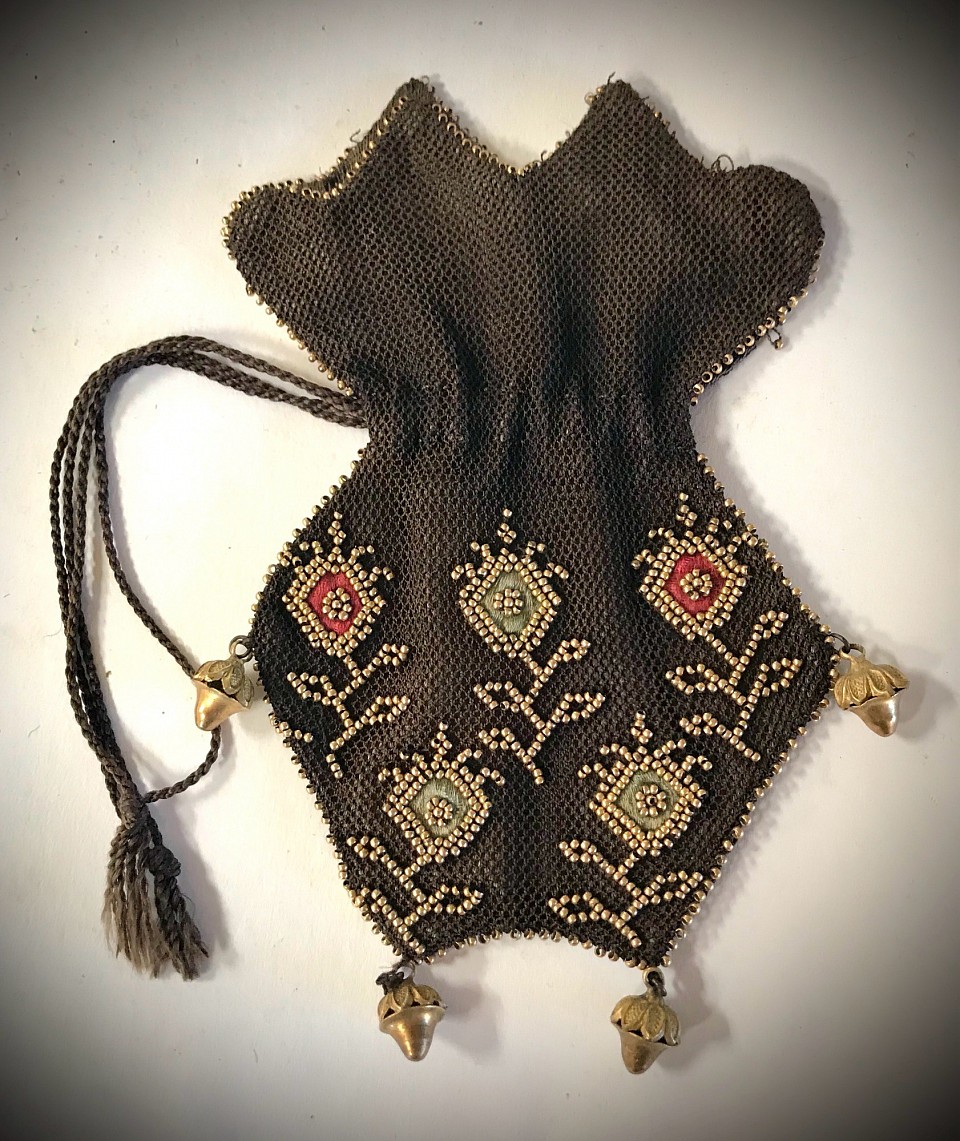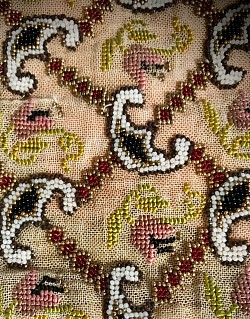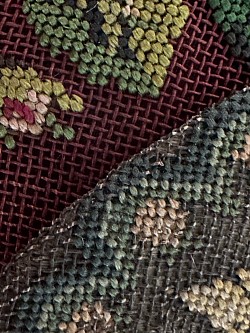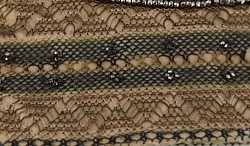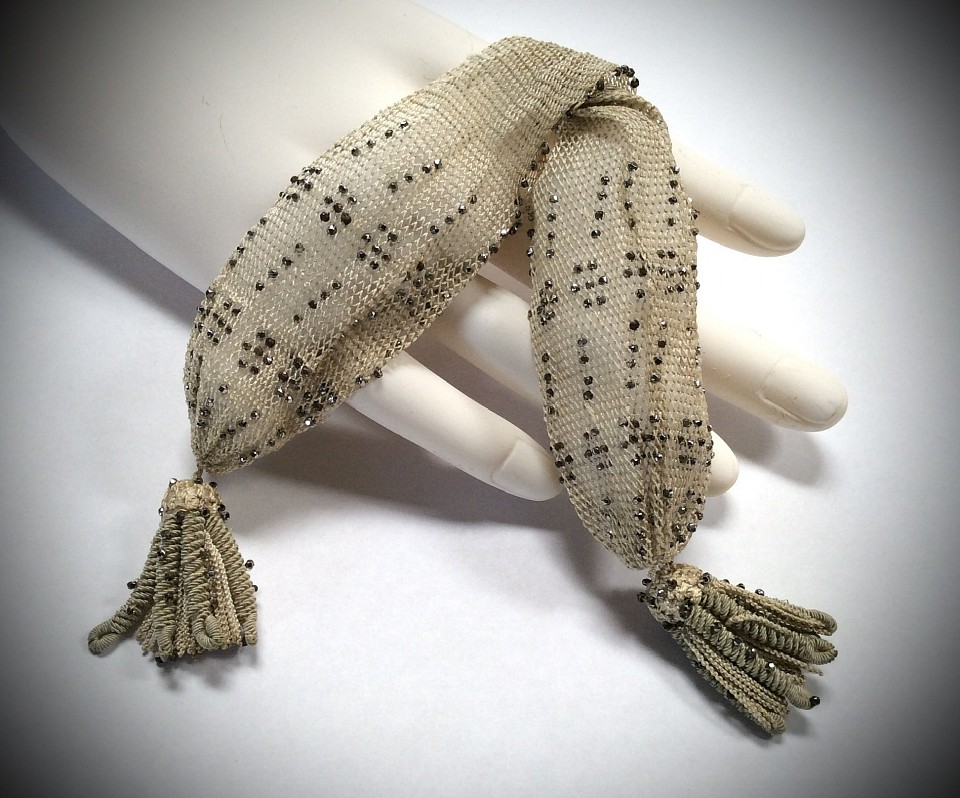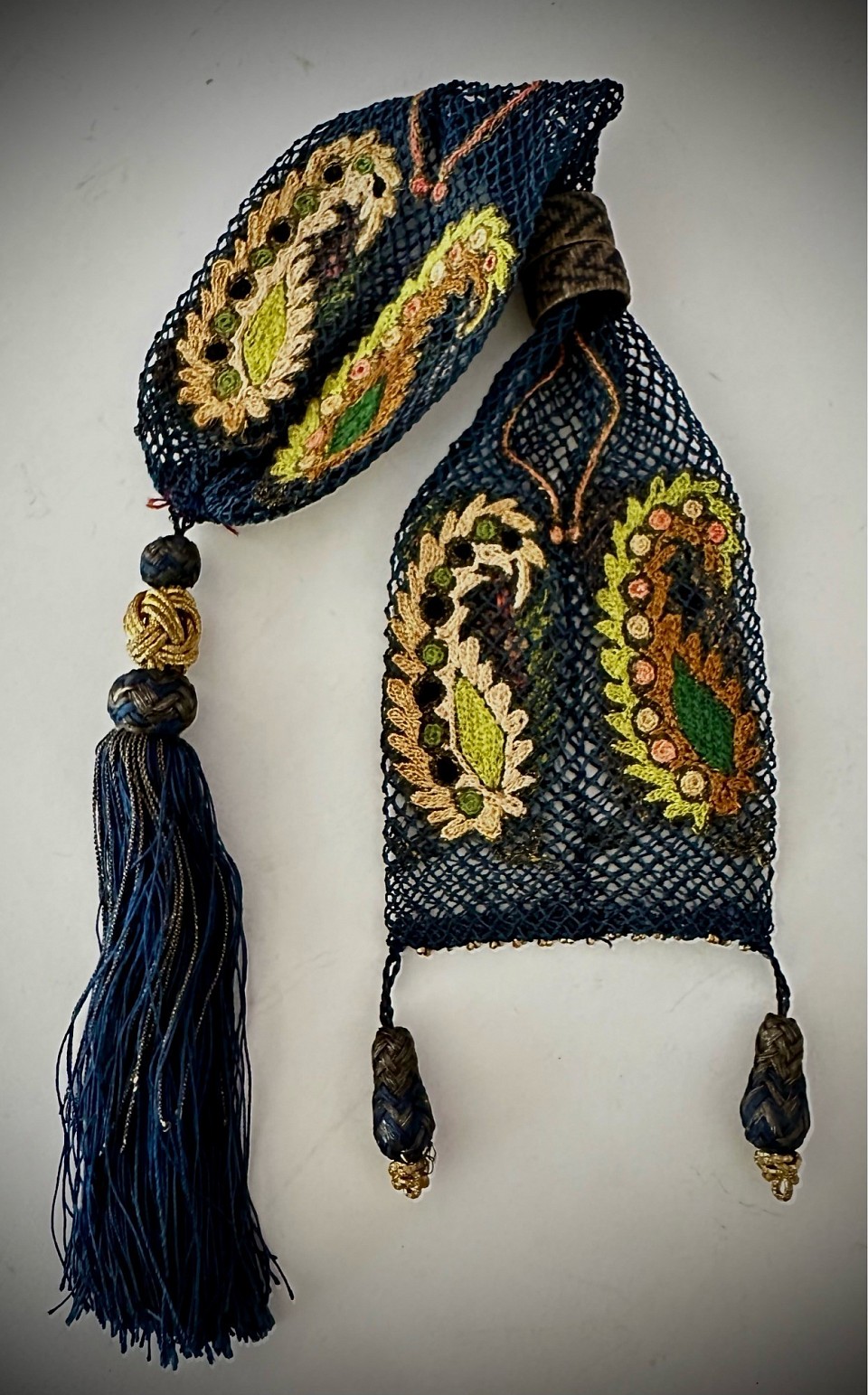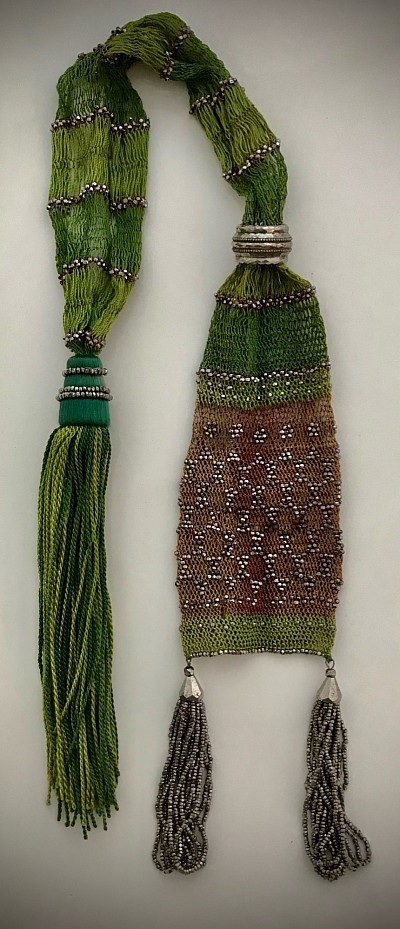Embroidered Antique Purses on Screen or Netting
Special Treasures from late 1700’s - early 2000
ABOUT NETTING: from Candice Hern article on netting from ‘Regency World’
“Netting was a popular pastime from the mid-18th century through the early 19th century, and was practiced by both men and women. Whereas men generally worked on utilitarian nets for use in fishing, hunting, or gardening, the favorite object for women was the netted purse. In Jane Austen’s Pride and Prejudice, Mr. Bingley is impressed with the accomplishments of young ladies, and says, “They all paint tables, cover screens, and net purses.”
Silk was the favored thread for netting, though linen, cotton, and wool were also used. Purse silk or “twist” could be bought from specialist shops.”
-
From Piecework Magazine re America needlework technique from the 1830’s and 40’s
“ called “needlerun,” “darning on net,” or “embroidery on net,” a technique of sewing yarn through the holes in machine-made net. Pat Earnshaw, an authority on lace, calls the technique “Limerick lace” in her book, Needle-made Laces, although several books use the term Limerick lace to refer to lace that includes tambour work done with a hook as well as embroidery with a needle.”
-
During the early 20th century, artisans copied earlier styles and materials. Often these revivals were larger in scale. Sometimes old textiles were reframed for a more modern appearance.
BELOW PLEASE CLICK ON EXAMPLES FROM THE PURSE MUSEUM COLLECTION
NOT NETTED IT’S SPRANG
This wonderful Miser Purse is not netted. One of my mentors from the Antique Purse Collectors Society: Paula Higgins, explained the difference between the netting shown above and this similar looking technique.
“The large green miser, with cut steel beads, is sprang, not netting. You only see that on earlier purses. It has this spring feel -it-stretches”
learn more : https://en.m.wikipedia.org/wiki/Sprang
